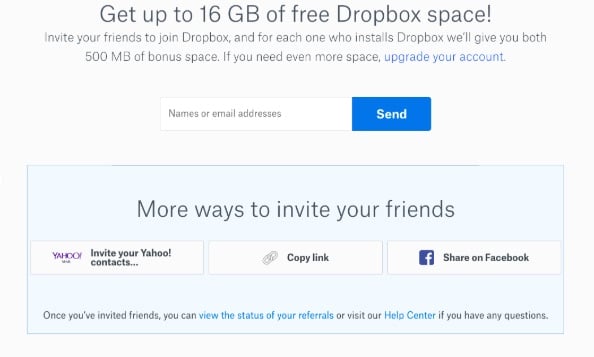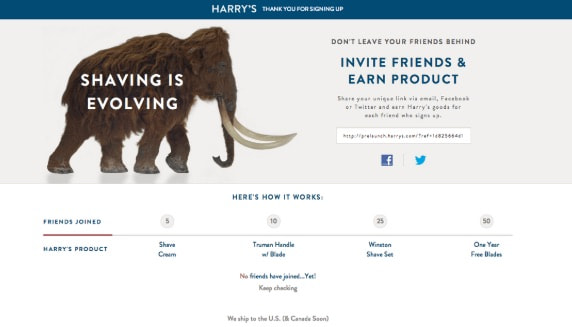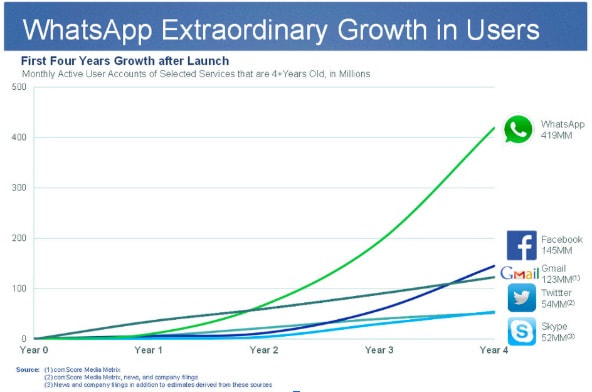Growth is fundamental to a business’ survival. Roughly 66% of businesses survive their first two years in operation, about half make it to the five-year mark, and just 33% will celebrate their tenth anniversary. Those numbers are remarkably consistent across most industries — but they also highlight how important it is to plan for growth from day one.
In 2018, 53% of American SMBs planned to grow, and 22% planned to hire additional staff. That marked an impressive uplift from the 2017 figures of 46% and 9%, respectively. A concrete growth strategy is more than a marketing strategy, it’s a crucial cog in your business machine. Without one, you’re at the mercy of a fickle consumer base and market fluctuations.
So, how do you plan to grow?
Free Download: Sales Plan Template
Business Growth Strategy
Growth strategy allows companies to expand their business. Growth can be achieved by practices like adding new locations, investing in customer acquisition, or expanding a product line. A company’s industry and target market influences which growth strategies it will choose.
Strategize, consider the available options, and build it into your business plan. Depending on the kind of company you’re building, your growth strategy might include aspects like:
- Adding new locations
- Investing in customer acquisition
- Franchising opportunities
- Product line expansions
- Selling products online across multiple platforms
Your particular industry and target market will influence your decisions, but it’s almost universally true that new customer acquisition will play a sizable role.
Not sure what that looks like for your business?
Start by learning from the most successful companies. Identify their strategies, test them in your niche, and see what works best for you. Here are five companies and their primary growth strategies to get you started.
Growth Strategy Examples
1. Dropbox
Growth Strategy: Viral Loops
As a trailblazer in the cloud storage software arena, Dropbox launched in 2008 and introduced the world to the ease of keeping files in the cloud, rather than on a physical device.
We take that convenience for granted today, but it wasn’t always the case. In fact, Dropbox faced an uphill battle to convince users to abandon their trusty USBs and external drives in favor of the ”cloud” — a new and unknown idea.
Dropbox knew it had a premium product that everyone from students to executives would find invaluable. It just had to get the word out.
But it succeeded. The service hit its million users milestone by April 2009, doubled that figure only five months later, and made it to three million just two months after that. Currently, Dropbox boasts over 500 million users worldwide.
How did they do it? Viral loops.
The basic premise of a viral loop is straightforward:
- Someone tries your product
- They’re offered a valuable incentive to share it with others
- They accept and share with their network
- New users sign up, see the incentive for themselves, and share with their networks
- Repeat
At its best, a viral loop is a self-perpetuating acquisition machine that operates 24/7/365.
Dropbox works on a freemium to premium model, offering all users 2GB of storage with a free account. But its incentive? An additional 500MB for every friend they successfully refer, allowing users to get up to 16GB for free. Inside Viral Loops
Inside Viral Loops
The result? The service grew by 3,900% over a 15-month span.
Viral loops are not guaranteed to go viral, and they’ve become less effective as they’ve become more commonplace. But the potential is still there.
Part of the appeal is that the viral loop flips the traditional funnel upside-down: CleverTap
CleverTap
Instead of needing as many leads as possible at the top, a viral loop funnel requires just one satisfied user to share with others. As long as every referral results in at least 1.1 new users, the system continues growing.
2. Harry’s
Growth Strategy: Milestone Referrals
You might remember when Dollar Shave Club burst on the scene in 2012 with the promise of high quality, affordable blades delivered right to your door. Harry’s followed suit the next year without taking the viral video route. Instead, it made savvy use of something called milestone referrals.
It worked like this: visitors to a pre-launch landing page signed up to receive email updates. They also received a referral link to share via email, Facebook, and Twitter. The more people they referred, the more they could earn in rewards.

In this case, the ”milestones” were X number of referred friends. It was simple to share, easy to hit the milestones, and delivered a tangible product as a reward.
The result? Harry’s collected 100,000+ emails before it ever officially opened for business.
3. Slack
Growth Strategy: Word-of-Mouth
In less than six years, Slack has become the go-to platform for online collaboration and communication for both professional and personal users.
From just 8,000 users at launch in 2013, Slack hit one million daily active users in late 2015. Today, the service boasts over 10 million DAUs. That’s a pretty stellar growth metric. But how did Slack do it?
In the beginning, Slack made itself available to large, established companies like Rdio and Flickr, generating plenty of early press coverage. The company focused on user satisfaction above all, answering thousands of help tickets and tweets each month. This attention to customer service led directly to positive word-of-mouth amongst its early adopters.
Even Slack’s leadership team was blown away by the success of its word-of-mouth approach. In 2014, co-founder Steward Butterfield stated, ”The growth has been completely insane and almost entirely on word of mouth. In fact, we just hired our first marketing person, but he doesn’t begin until next week.”
Word-of-mouth is organic and effective. 83% of Americans say a recommendation from a friend or family member makes them more likely to purchase or try a product, and 50% would go with word-of-mouth if they could only choose one source of information.
The secret of word-of-mouth’s effectiveness lies in a deeply rooted psychological bias all people have — we subconsciously believe the majority knows better. That’s why social proof remains the #1 instrument in both sales copywriting and overall marketing content, and that’s why most brands draw focus toward their online reputation.
They know in today’s customer-driven world, when communication methods change and information is available to all, a single negative blog post or tweet can compromise an entire marketing effort.
As the father of digital word-of-mouth growth, Pete Blackshaw says, ”satisfied customers tell three friends; angry customers tell 3,000.” That’s why Slack focused on positive user experience to grow its base of satisfied customers and the wave of loyal feedback that comes with them.
Focus on delivering a spectacular user experience, and users will spread the word for you.
4. WhatsApp
Growth Strategy: The ”When They Zig, We Zag” Approach
When entering a crowded marketplace, you’ve got to stand out. Your value proposition needs to clearly demonstrate your competitive advantage over others. Why should users go with your product or service instead of someone else’s?
WhatsApp wasn’t the first cross-platform messaging app when it launched in 2009, but it has gone on to become one of the most successful. Over 1.2 billion monthly active users can vouch for that.
Its founders, Brian Acton and Jan Koum, wanted to create a product without the baggage that came with similar apps at the time. They intentionally opted for no ads, no marketing, and a free first year to attract users fed up with other providers.
And it worked. WhatsApp stood out by being dramatically different from every other option at the time.
They created a product that was brilliantly simple for sending and receiving instant messages. People started to use and share it as a result — so much so that WhatsApp’s growth outpaced the likes of Facebook, Skype, and Gmail in its first four years. Growth Hackers
Growth Hackers
Use this tactic by first asking what’s wrong with the current options in your niche? Can you improve or eliminate it entirely? Highlight what you find, and get users talking.
When the competition zigs, you zag.
5. Tinder
In-Person Outreach
Tinder is one of the most — if not the most — prominent dating applications available. According to an annual report from their parent group, Match Group, Tinder raked in over $800 million in direct revenue in 2018.
The application has revolutionized online dating over the last decade, but how did it get off the ground? An excellent growth strategy and a lot of dedication made it happen.
Tinder’s growth strategy took off at the University of Southern California in 2013. Co-founder Justin Mateen’s younger brother was throwing a birthday party at his parents’ house for one of his classmates with 500 or so students planning to attend.
Mateen’s brother had arranged for buses to transport partygoers between campus and his parents’ home. Mateen heard about the situation and took the opportunity to promote his new dating app.
Tinder paid for the whole event. The company also hired a bouncer, and any student who wanted to get into the party had to download Tinder at the door.
Once those students returned home from the party and started matching with each other, Tinder became what co-founder Sean Rad describes as “a phenomenon within USC.”
Over the next few months, the Tinder team conducted more personal outreach at fraternities and sororities across Southern California. They also handed out fliers, discussed the app with prospects in coffee shops, and stopped people on the street to demonstrate the application’s value.
This set the course for Tinder to be carried by word of mouth.
At the beginning of January 2014, Tinder had 20,000 users. By the end of the month, they had 500,000.
If Tinder is any indication, putting boots on the ground and personally interfacing with potential customers can be a great way to get your business the traction it needs to get going.
This could mean hosting or sponsoring events, attending conferences relevant to your space, hiring brand ambassadors, or any other way to directly and strategically reach out to your target demographic in person.
Successful companies plan for growth. They work for it. They earn it. So what’s your plan?




